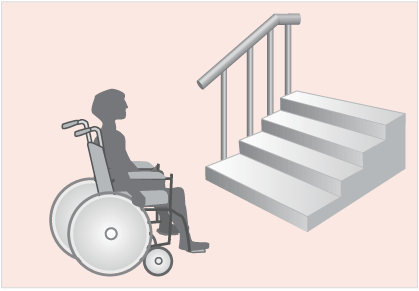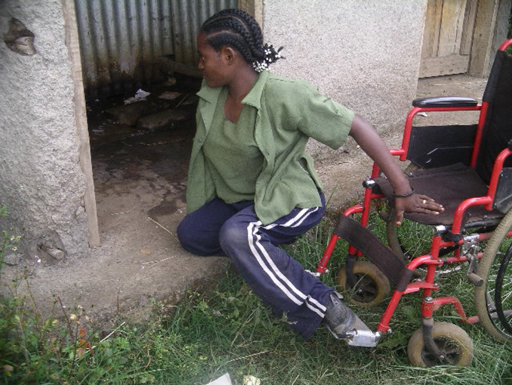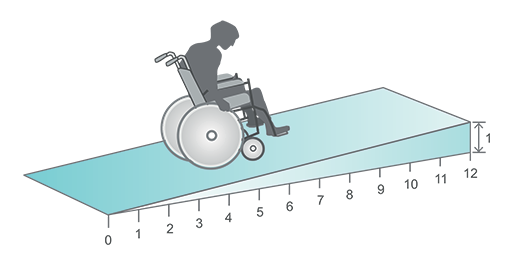2.3.1 Physical barriers
Physical barriers (also known as environmental barriers) can be natural or technical. Natural barriers include uneven, rough or steep paths on muddy ground and long distances that often need to be walked to reach a water source. Technical barriers (also known as infrastructural barriers) such as slippery floors and steps are created by poor, non-inclusive design and construction. Physical barriers are an accessibility problem everywhere, not just for WASH services (Figure 2.3).

Physical barriers often force disabled people into unhygienic and dangerous practices. For example, wheelchair users like the young woman in Figure 2.4 have to crawl on the floor of latrines because entrances have steps or are too narrow.

Some physical barriers can be removed with appropriate inclusive design that recognises the importance of accessibility. For example, the problems caused by steps (if there are only a few) can be overcome by constructing a ramp. A ramp is a sloping surface joining two different levels, for example at the entrance of a building. Ramps can be made of cement or wood and must not slope too steeply. Ideally the gradient (slope) of the ramp should be a minimum of 1 in 12 (Figure 2.5).

What could you do to remove the physical barrier faced by the young woman in Figure 2.4?
You could put a wooden ramp over the step so she could wheel her chair to the latrine door. But that still may not solve the problem if the door is too narrow and the space inside the latrine too small for her chair.
2.3 Barriers to inclusion
